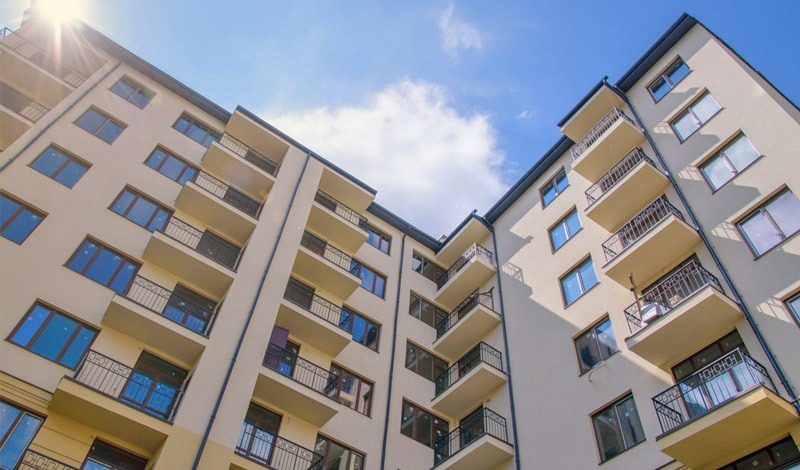High-performance heating and cooling is essential for comfort — and for attracting and retaining good tenants. However, it’s a significant operating expense. For new and existing multifamily buildings, variable refrigerant flow (VRF) systems are an efficient and cost-effective solution.
How variable refrigerant flow works
In VRF systems, heat is transferred to or from the space directly by circulating refrigerant to evaporators located within the conditioned space. So, outdoor condensing units can serve multiple apartments, while allowing each room to be controlled separately. This compares to ducted systems moving air or chillers moving cold water.
The cold weather performance of heat pumps typically degrades as the outdoor temperature plunges. However, new VRF technologies have largely overcome this issue. Vapor injection increases refrigerant density, which decreases the compressor load at cold temperatures. Hybrid heat exchangers with a larger heat transfer area and different tube diameters also improve cold weather performance.
A technology known as variable refrigerant temperature (VRT) changes the refrigerant temperature set point depending on the outdoor temperature. This is similar to the familiar chilled water or boiler reset function of traditional HVAC systems.
Benefits of VRF systems
VRF heat pump technology has been around for about 30 years, but is relatively new to the US market. For multifamily buildings, VRF systems have several benefits:
- Peak load flexibility (due to vacancies).
- Space savings (no ductwork).
- Individual comfort control.
- 10% to 15% more energy efficient than conventional HVAC systems.
- Ease of installation and maintenance.
- Quiet operation on the roof and in rooms.
VRF systems do have some shortcomings. A separate ventilation system is required and there is a potential for leaks. Also, the average capacity of indoor units decreases as outdoor unit capacity approaches its maximum.
An innovative comfort option
VRF systems are being successfully installed in multifamily buildings around the country. For example, 101 Bedford is a newly constructed facility with 351 luxury apartments. The Brooklyn, New York, building has 29 outdoor VRF units that serve 450 indoor units.
At Union Mill in Baltimore, Maryland, a 146-year-old stone building was converted into 56 apartments. The redesigned facility also includes office space and a restaurant. A new VRF system was used to replace an old central boiler plant.
If your HVAC system is older or in need of repair, consider a VRF system as an economical and energy-efficient upgrade option that can enhance your properties.
